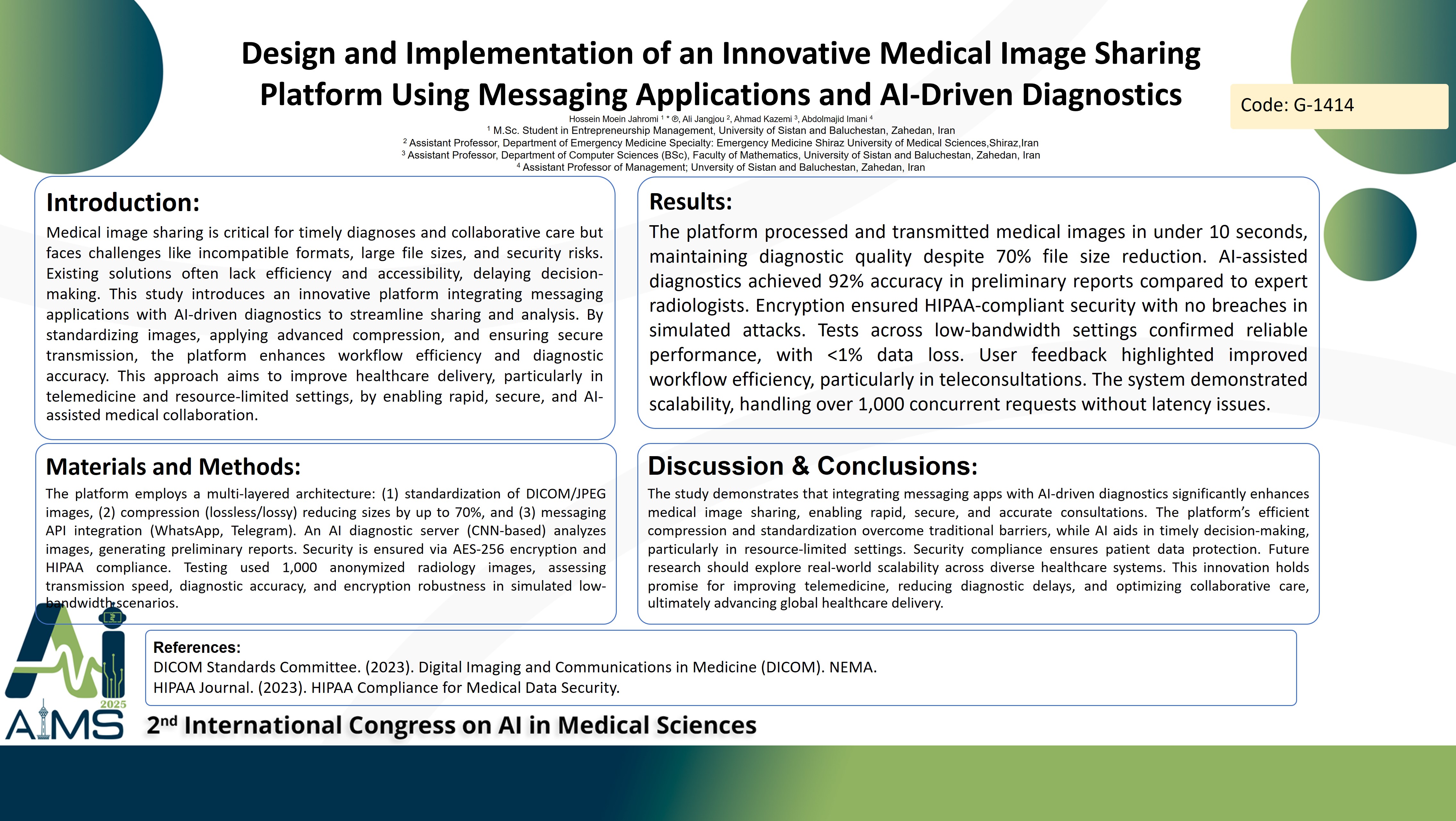Design and Implementation of an Innovative Medical Image Sharing Platform Using Messaging Applications and AI-Driven Diagnostics
Code: G-1321
Authors: Hossein Moein Jahromi * ℗, Ali Jangjou, Ahmad Kazemi, Abdolmajid Imani
Schedule: Not Scheduled!
Tag: Intelligent Virtual Assistant
Download: Download Poster
Abstract:
Abstract
Background and aims: Medical image sharing among professionals is often hindered by incompatible formats, large file sizes, limited bandwidth, and security concerns, delaying critical collaboration. This study aims to design and implement a novel platform that enhances medical image sharing through messaging applications, integrated with an artificial intelligence-powered diagnostic server, to improve efficiency and patient outcomes. Method: the platform features a multi-layered architecture. The first layer standardizes images from various modalities for uniform processing. The second layer applies advanced compression techniques, reducing file sizes by up to 70% while maintaining quality. The third layer uses dedicated APIs to enable seamless image sharing via popular messaging services. A secure server with machine learning algorithms analyzes images and generates preliminary diagnostic reports, transmitted alongside images. Robust encryption ensures data security. Performance and security were evaluated using diverse image sets and simulated transmission scenarios. Results: The platform processes and transmits images in under 10 seconds, preserving high diagnostic quality. Compression achieves significant file size reduction without compromising detail. Artificial intelligence-assisted diagnostics demonstrate notable accuracy in preliminary reports. Security tests confirm that patient data remains encrypted and protected from unauthorized access throughout the process. Conclusion: This platform effectively addresses barriers to medical image sharing by combining standardized handling, efficient compression, secure transmission, and artificial intelligence-driven diagnostics within accessible messaging applications. It accelerates expert consultations, reduces operational costs, and enhances access to diagnostic insights, ultimately improving healthcare delivery and patient care. The integration of artificial intelligence not only streamlines workflows but also supports faster decision-making, suggesting potential for broader adoption in telemedicine and resource-limited settings. Further research could explore scalability and real-world implementation across diverse healthcare systems.
Keywords
Medical image sharing Messaging applications Artificial
